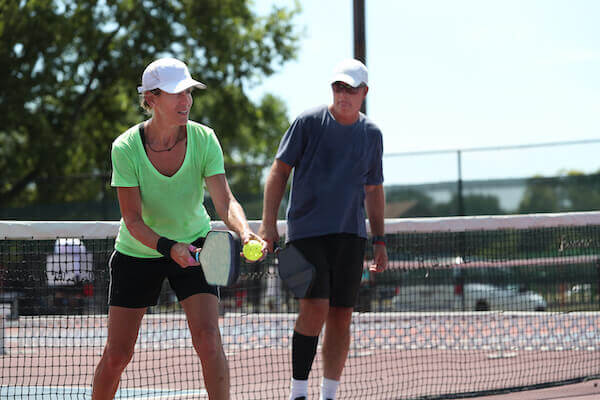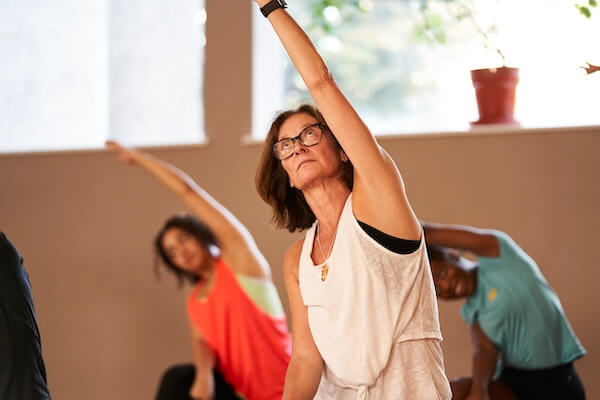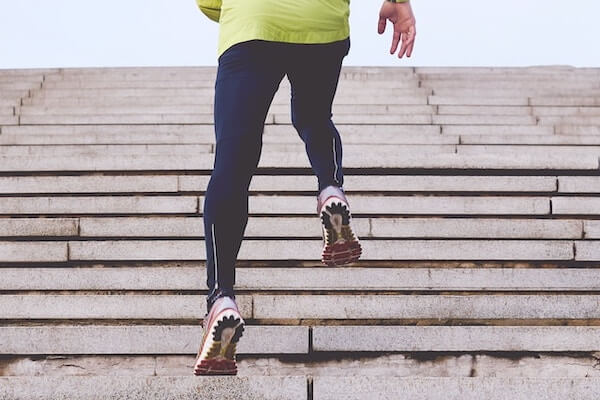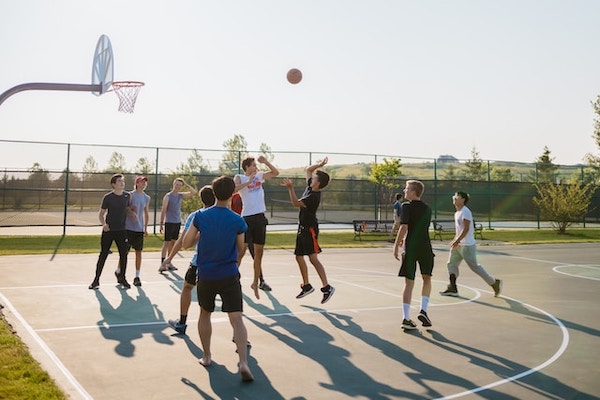
In recent years, discussions around LGBTIQA+ issues in sports have become more prominent. However, despite these conversations, many LGBTIQA+ young people still face significant challenges in these environments. This article summarises key findings from a research project by the Swinburne Sport Innovation Research Group, which aimed to document participation data and explore the experiences of LGBTIQA+ youth in sport and physical activity settings.
Key Findings
Discrimination in Sport
-
High Rates of Discrimination: The study found that 53% of LGBTIQA+ young people have witnessed homophobia, biphobia, or transphobia in sports settings. Additionally, 40% have personally experienced discrimination, primarily through verbal abuse.
-
Rural vs Metro Experiences: Discrimination rates were higher for LGBTIQA+ youth in rural areas (44%) compared to those in metro areas (35%). Interestingly, feelings of belonging were stronger among rural youth.
Participation Rates and Trends
-
Decline in Sport Participation: Only 37% of LGBTIQA+ youth currently play social sports, and 33% play competitive sports. This marks a decline from pre-pandemic levels when 47% were registered with sports clubs.
- Preference for Gyms: LGBTIQA+ young people are more engaged with gyms and fitness facilities than traditional sports, indicating a shift away from sports clubs.
Motivations and Encouragement
-
Health and Enjoyment: The main motivations for participating in sports were physical health and fitness (62%), fun (60%), and mental health benefits (37%).
- Encouragement Factors: Friend referrals (57%), a welcoming culture (45%), and LGBTIQA+ specific programs (42%) were the top factors that could encourage greater participation.
Attitudes Toward Pride Efforts
- Skepticism of Rainbow Washing: Participants expressed concerns about "rainbow washing" by sports organisations, where superficial support for LGBTIQA+ issues is shown without substantial action. Ongoing debates about LGBTIQA+ issues in sports, like the inclusion of trans athletes, also negatively impacted their mental health.
Key Themes from Focus Groups
Early Experiences
Early school and community sports experiences significantly impact LGBTIQA+ youth. Participants in the focus groups spoke about the profound impact of their experiences in school and youth sport settings. The majority had witnessed or experienced some type of discrimination through homophobia, biphobia, or transphobia, and participated in sporting cultures that were indifferent or apathetic to LGBTIQA+ identities. Bullying, discrimination, and hostility can lead to young LGBTIQA+ people dropping out of sports, often for a lifetime. The trauma from these experiences can stay with them, leading them to actively remove themselves from these environments to protect themselves from triggering feelings of isolation.
Another significant source of anxiety for many young LGBTIQA+ people is the use of locker rooms and changing rooms, where they are often forced to change in open spaces. One young gay man spoke of his anxiety when trying to re-engage with swimming after the COVID-19 pandemic:
"I've recently tried to start [being active] towards the end of last year, I started to try going to the pool again, like pool was this massive anxiety thing for me it was like, almost worse than the gym because I'm like, oh my gosh, I'm gonna be half naked, swimming. And then I've got the locker room scenario like back to the football days. So, like it was like a nightmare to get back into that. And then but I've only just first gone properly this year yesterday. I haven't really been doing much at all physically."
These early experiences in sport and PE are crucial in shaping LGBTIQA+ young people's relationship with physical activity. The negative impacts can result in a lifetime of avoidance, making it essential to create supportive and inclusive environments from a young age.

Personal Stories
The diverse personal stories of LGBTIQA+ youth highlight the varied experiences within the community. Each young person had a unique story associated with their sport and movement experiences, influenced by their personal circumstances. These stories reflect the broad spectrum of challenges faced by LGBTIQA+ youth, including navigating adolescence, understanding their sexual and gender identity, balancing studies, accessing facilities, dealing with their location, and managing their mental health.
One of the focus group participants shared their journey of trying to build a healthy routine despite the pressures and norms associated with body image in the gay community:
"I'm currently trying to build a bit of a healthy routine and build some healthy habits. Right now. It's, it's playing netball once a week with some people I met through the grad program at work. And that's actually really fun. There's a few great people in the team. So that's really good. Otherwise, I have a dog. So go for walks couple of times a day, and I'm trying to, because I don't really want to head to the gym, probably just start doing some like home workouts because it seems more affordable and accessible. But yeah, kind of just trying to build healthy habits at this point."
The LGBTIQA+ community is rich in diversity, and this was clearly reflected in the research data. Each young person is different, with varied histories and experiences that shape their engagement in sports and physical activities. Several secondary themes emerged, including:
- TGD Specific Barriers: Transgender and gender-diverse youth face unique challenges in sports and movement settings.
- Motivations to Develop Healthy Habits: Many young people are driven to develop healthy habits for their overall well-being.
- Physical Activity on Own Terms and Schedule: Flexibility and accessibility are crucial, with many preferring home workouts or activities like walking their dog over gym visits.
Body image and self-perception were common topics across all
focus groups. Many LGBTIQA+ young people discussed the pressures
to conform to certain body standards, especially within gay
communities. Despite these pressures, numerous participants
expressed their desire to engage in physical activities for
personal reasons, rather than conforming to societal expectations.
This diversity in personal circumstances and stories underscores
the need for inclusive and supportive environments that cater to
the varied needs of LGBTIQA+ youth.

Identity Navigation
Navigating LGBTIQA+ identity in sports spaces, including the process of coming out, is a significant challenge. The period between adolescence and early adulthood is already complex and challenging, and for LGBTIQA+ youth, it involves the additional layer of navigating one’s sexuality and gender identity. Movement and sport spaces can provide opportunities for some young people to flourish and use physical activity as a coping mechanism. However, for many, these spaces can feel alienating and make them feel isolated, excluded, and out of place.
A critical theme that emerged from the focus groups was the desire to simply exist freely in sports and movement settings. Nearly every young person interviewed expressed a longing to be themselves without having their identity challenged, questioned, ridiculed, resisted, or invalidated. One participant explained this sentiment clearly:
"Inclusion for me is in regard to all my identities, regardless of what that space is intended as, but everything is already filled out. It's kinda like I just get to exist and enjoy and kind of do what those who don't have my identities do in their space, is kind of the best way to put it. So, it's a feeling, it's through policy as you can see it. But it's more of a gut feeling. The best way to explain it is like my hyper vigilance decreases. And I'm just like, at ease.”
Young people with multiple diverse identities, such as those from culturally diverse backgrounds or those living with disabilities, often had negative experiences that made them hyper-vigilant. They anticipated problems like discrimination or casual vilification, and having to advocate for themselves was a common and exhausting experience. One young person elaborated:
“I think, inclusion, I think the best way to put it is that I don't have to advocate like, policies are already put in place, I don't have to push for them, I don't have to think about these things. They... someone's already done it, it's already been organised. I just get to exist and be me in a space, which is very, very hard. It doesn't happen very often. But I think that's it's like, it doesn't matter if you've got a cool rainbow flag, I always feel more comfortable if there's a rainbow flag in the building. But it's about me just getting to exist and be me and not have to fight or advocate."
This quote underscores the need for inclusive policies and practices in sports spaces, as well as the importance of allyship. Minority stress and the need to constantly advocate for inclusion take a significant toll on LGBTIQA+ people, especially during critical periods of identity development.
However, some participants, particularly in university sports clubs, did report positive experiences. These clubs had received training and education, support from their universities, and held successful pride-themed events that fostered positive conversations about sexuality and gender. One young lesbian participant noted the positive culture and affirming environment of her club, which allowed her to feel safe to come out and share her identity if she chose to.

Representation
Visibility and representation of LGBTIQA+ individuals in sports are crucial for inclusivity. The theme of representation and visibility in sports involves measures to improve participation and engagement for LGBTIQA+ young people. The secondary themes include the importance of role models, the need for more representation, and the visibility of LGBTIQA+ individuals in sports settings.
Young people discussed the significant impact of having role models in sports. One young lesbian soccer player expressed how seeing role models who openly express their relationships and sexuality was inspiring:
“I really look up to the people in my team, currently, and on the outside, like celebrities like Sam Kerr and her girlfriend, and Meghan Rapinoe. And people like that, who really do outwardly express themselves in their relationships. Because, yeah, I think it's really like nice to see and, like, helps if, you know, you're in that situation as well.”
Having role models on the global stage, who unapologetically live their lives, is vital for young people. The saying "You can’t be what you can’t see" is appropriate here, as being able to see a reflection of themselves in sports roles is inspirational. Furthermore, the participant mentioned that seeing older players in her team being open about their relationships helped her come to terms with her own sexuality and feel comfortable sharing information with her teammates.
Another participant highlighted the importance of role models within their club:
“Yeah. And then in my club, it was a bit different, like I have role models, I'd say. And I think that people that you look up to, or you know, that are queer, that are LGBTQ, and you see them, and you idolize them a bit. So, I remember, like 15, 16, I joined my first women's soccer team. And my captain, and the vice-captain, we're both gay. So like, I just, I think subconsciously, I just looked at them. I was like, they are so cool. Like, I love them as people like they're such good humans. And so like, I didn't actively associate them being about sex and lesbians. But like, again, it was just normal. It's like, you know, what they like, love who you love.”
This participant explained how the normalization of lesbian
relationships and out athletes provided role models to look up to.
Additionally, the normalization of diverse sexualities and genders
is seen as crucial to building respectful and affirming sports
environments.
The focus here is on the importance of diverse role models in playing positions and the need for a diverse workforce that reflects diversity in sexuality and gender. This visibility allows young people to see viable options and pathways into non-playing positions such as coaching and leadership.
This need for representation and visibility extends to LGBTIQA+ athletes in sports. The data suggested that young people notice the lack of LGBTIQA+ representation in coaching and administration, which is an underexplored area in LGBTIQA+ sports scholarship. Therefore, increasing the representation of LGBTIQA+ individuals in various roles within sports can help build a more inclusive and affirming environment, encouraging more young people to participate and engage in sports.
Safer Spaces
Creating safer spaces in sports settings is essential for the well-being of LGBTIQA+ youth. The concept of safer spaces emerged as a predominant theme in focus groups, with young people identifying their paramount importance for engagement in sport and movement activities. The secondary themes within this concept include gender-inclusive sports, gym culture and spaces, and factors promoting inclusivity.
Young people expressed a strong desire to engage in sports outside the rigid gender binary, allowing all genders to play together for fun and social benefits. Many questioned the necessity of dividing social sports into boys vs. girls and men vs. women, which often excludes trans and gender-diverse individuals while reinforcing outdated gender norms. A young gay man explained:
“And then often a lot of times like, some players can be quite homophobic, like, I've just noticed that a lot of guys that are really into sport, like, in my experience have a higher chance of them being a little homophobic then guys that aren't like, obviously it's not the case for all guys like at all. But that's just my experience. So, I think just there should be more mixed sex options. I think there's too many sports that divided by sex. And I think a lot of people might feel more comfortable in maybe like a mixed sex one.”
This quote highlights the prevalence of homophobic attitudes in men's sports and how young gay men can feel unwelcome. The preference for mixed-gender spaces and opportunities also allows young people to be with friends, making their non-binary and gender-diverse friends feel included and welcome.
For some young girls and women, the lack of mixed-gender opportunities and strict single-gender team rules forced them to stop playing sports. One participant shared:
“We would go to my brother's games on the weekends. And there was one girl who would always play, and she was amazing. She was, you know, kicking goals, literally and figuratively. And then it got to under 16’s, and then they told her you can't play anymore. And I remember being so confused. I was like, well, she's a better player than some of those other guys.”
The reinforcement of a strict gender binary within schools was also problematic, especially for trans and gender-diverse young people. One participant highlighted their experience:
“When I was in Year 10, I'd started to transition a bit. My teachers were really great at accommodating for that. They were like, okay, no worries, instead of splitting you up into boys and girls, we were split up into more aggressive players and more, you know, those who just want to play for fun, which then did end up being mostly girls and mostly boys, which didn't really solve the problem. And like the times that I had the most fun was when we weren't split up when we just played all together, and something that I think my teachers tried to do to try and get everyone more included was like, oh, you know, if boys score, it's one point. But if girl score, it's not, it's two points, and were like, that was horrible. And I hated that.”
This participant's experience underscores the positive impact of allowing people of all genders to play together, rejecting gendered stereotypes associated with boys' and girls' bodies.
Many young people in focus groups discussed their engagement with gyms, either current or past. Conversations focused on the cultures within gyms, with some participants describing them as "bro cultures." These spaces were associated with hyper-masculinized environments where men lift heavy weights and dominate certain areas of the gym. This atmosphere was off-putting for participants, especially when they felt intimidated by not knowing the correct exercises or techniques.
Pride Efforts
Attitudes towards pride efforts in sports vary, with many advocating for more meaningful inclusion. The final theme to arise from analysis of the data was young people’s attitudes towards pride efforts. Young people spoke candidly and passionately about their feelings towards sports organizations' engagement in the pride space. The associated secondary themes included the impacts of debates and hate speech, the (toxic) culture of sport, tokenism and rainbow washing, and the impacts of pride rounds and activities.
Young people clearly expressed the impact that ongoing debates in sport, especially across media platforms and social media, had on them and their feelings towards sport. This was particularly noticeable around the inclusion of trans athletes within elite sport, and the negative impact and message it sends to trans and gender diverse young people; they are not welcome in sport and there is no place for them. As one young trans person outlined:
“I think sports as a whole doesn't feel specifically trans friendly given some of the recent policy changes that we have seen major sporting leagues do. I don't feel safe. I guess I can't participate in mainstream sports anyway now, but if I could, I wouldn't feel safe participating in any. It doesn't feel welcoming.”
Another young person explained their frustrations with the overemphasis on trans athletes in sport and the demonization of trans athletes:
“Like around the Olympics and stuff, it's always trans people who are like villainised, they're like, Oh, well, you want you want to transition so you can play in this separate league. And I'm like, as a trans person, I can assure you, that's not why they want to transition. And hearing that, it's like, it feels like they're invalidating other trans people, because it's like it, they make it sound like they're using it as a tactical move, rather than someone who just wants to be themselves. And that's what really frustrates me about the whole thing, as well as it's like, these people they don't, they're not doing it to be better than everyone else. They're just doing it because they want to be themselves.”
Other young people spoke about the misconceptions and hostility towards trans athletes, based on misinformation and propaganda. The suggestion that trans people want to transition purely for competitive advantage and sporting success left young people frustrated, and as the quote above delineates, could not be further from the truth. A person affirming their gender is a deeply personal process, and sport can play a meaningful part of this affirmation journey. Instead, it adds to shame and stigma towards trans identities. Young people were aware of politicians and media outlets using the issue to create division and hostility.
Read The Full Report
The findings highlight the need for more inclusive and supportive
environments in sports for LGBTIQA+ youth. By addressing
discrimination, encouraging participation, and creating safer
spaces, we can ensure that all young people have the opportunity
to enjoy the benefits of sports and physical activity.
To
access the full report, visit the VicHealth website.
Takeaway Stats
-
53% of LGBTIQA+ youth have witnessed discrimination in sports.
-
44% of rural LGBTIQA+ youth experienced discrimination compared to 35% in metro areas.
-
33% currently play competitive sports, and 37% play social sports.
-
62% participate in sports for physical health, while 57% said friend referrals would encourage them to join.
Creating a welcoming and affirming environment is essential for increasing LGBTIQA+ youth participation in sports. Let's work together to make sports a place for everyone!






